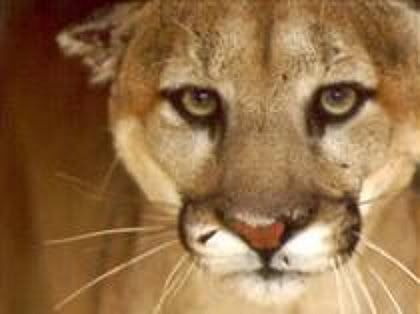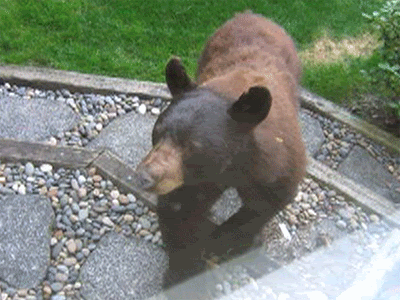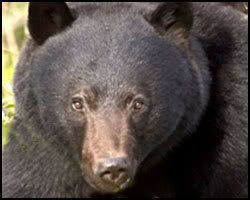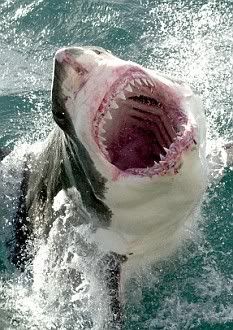
Above: This is the best way to see a cranky mountain lion…no risk.
Yikes, it seems like there is more animal attacks and incidents going on out there than I expected…and I haven’t even talked about shark attacks!
Cougars are in the news again and just how true some of them are is left to your imagination. Take the issue of Kevin Lassite the hiker who claimed to pet wild cougar cubs when he was stopped by the mad mama mountain lion–who rightly took a swipe at him.
Do you wonder why they have the Darwin Awards?
Anyway, officials are not buying the claim about the cougar incident but as usual we shall have to see how this plays out if it is a false claim of a mountain lion incident Kevin Lassite will be prosecuted.
There was another suspicious cougar incident in Palo Alto last month but they decided not to prosecute. (Here is the original article on the Palo Alto cougar attack.) 
BTW: This sign is near the Whiting Ranch Wilderness Park where the cougar cubs and their mom incident allegedly took place.
A scratch is not an attack–a warning maybe.
The Whiting Ranch Wilderness Park is also where Anne Hjelle was attacked by a mountain lion.
Over in Colorado the cougars seem to be a problem this week. This puma (another name for mountain lion) killed a deer in a suburban driveway.
I just hate when they get possessive over their prey.
The cool thing is that they live trapped that mountain lion and have the mountain lion video on YouTube–don’t fret the animal is tranquilized.
In Wyoming the Game & Fish Department guys didn’t have much luck catching the cougar they darted. Hopefully the cat recovered and will stay away from the more urban areas based on the experience.
Now some of you know that I live in an area where we have a part-time urban cougar. Usually the mountain lion moves in closer in September–read my mountain lion musings and eight cougar safety tips here.
 Now back to the bears…there was another black bear attack–this time in Coquitlam, British Columbia. The woman was gardening when she was attacked.
Now back to the bears…there was another black bear attack–this time in Coquitlam, British Columbia. The woman was gardening when she was attacked.
Neighbors came to her aid and everyone was pretty lucky considering…here is an update with photos and videos of the black bear involved in the attack.
What I find disturbing is that the people didn’t think that the bear was a threat. They seem to ignore the fact that it is a wild animal–and a large one.
One of the things that attracts wild animals to urban areas are the resources–food and water–both of which were available in this instance.
In my area people complain about the bears coming down to their yards and getting in their trash but they continue to leave those resources out.
So, after reading the animal attack posts this week I am curious to learn what questions or comments you may have. Please take a moment to leave them below.


Animal Attack Week Concludes
Today I thought I conclude this animal attack series with a few more accounts on cougar and bear incidents.
Of course, this week would not be complete without also including a few shark attack stories and other meanderings.
Urban Wildlife: Cougars
Here in California, urban wildlife (coyotes, bobcats, cougars) often prey on pets. At least this is the case in some of the areas I’ve lived.
Last week a dog (Buddy) was taken by a cougar from the yard in La Canada/Flintridge, California and the other, missing for six weeks, is feared to have met the same death. The owners recount the story in the news article. Heartbreaking.
Cougars are predators and so it isn’t a surprise to find them preying on pets. However, like coyotes who have been known to ignore pet owners and grab a pet for a meal, urban mountain lions seem to be getting more daring.
As I mentioned previously, humans unwittingly tend to provide snacks and water to attract animals which attracts the predators that prey on them.
Urban Wildlife: Bears
In the case of bears, garbage attracts them and they get territorial over the area providing the source of food–making them a danger.
It also creates a humans=food association which is never a good thing.
Dogs were also the victims of a black bear near Santa Barbara, California. Dry weather and the recent fires have driven wildlife into smaller areas and removed vast areas of natural resources and territories.
have driven wildlife into smaller areas and removed vast areas of natural resources and territories.
Then there is the disturbing trend of predatory attacks by black bears. Up in Canada, another aggressive black bear was shot and killed in the same neighborhood of Coquitlam, B.C. where a woman was attacked outside her home earlier this week.
Herrero, bear attack expert and author of Bear Attacks: Their Causes and Avoidance (revised) estimated that on average, bears kill three people and seriously injure between five and 15 annually in North America. He was quoted as stating, “Overall the injury rates are very low considering the millions of interactions that occur each year,”
In the revised edition of Bear Attacks (first published in the mid-1980s) the causes and avoidance of attacks by brown (the grizzly is a brown bear) and black bears are examined based on scientific analysis of 414 detailed records of encounters between bears and people. Details and analysis of certain attacks and non-injurious interactions are included in this work.
In 2000, Herrero was interviewed by the Calgary Herald who reported that the number of bear attacks that year was among the highest since biologists began keeping records 28 years ago even though specific numbers were unavailable.
The rule of thumb has always been to play dead in grizzly bear incidents and to fight back in black bear incidents but there are always exceptions to the rule. I’ve blogged about prevention before and carrying and using bear deterrent may help you if faced with a cougar or bear encounter.
Cougars are stealthy but any tool is a good one.
BTW: Yellowstone’s bear man has some interesting notes and so does Herrero’s Eastern Slopes Grizzly Bear Project. I also liked the Massachusetts Department of Fish & Wildlife Black Bear Problems & Control page.
Shark Attacks & Other Musings
The Discovery Channel’s Shark Week just recently concluded. I love the series because it takes a look into all types of shark behavior, research, biology, and human encounters.
types of shark behavior, research, biology, and human encounters.
In my career span I’ve worked with a variety of animals and only two make me nervous in the wild.
Great White Sharks is one species on this list just because when I was a surfer I enjoyed night rides and was active at dawn and dust in areas where white sharks were known to frequent–it is a always a risk.
Scientists have come up with a bite measurement for the great white shark–1.8 tons of bone crunching force.
Yikes!
The measurement came from Sydney, Australia and you can read more about the finite element analysis here.
Not too long ago in Makaha, Hawaii a snorkeler was attacked by a shark. The Early Show also has a video up of their interviews with shark attack survivors.
If you are interesting in shark attacks you can get useful information from the International Shark Attack Files from the Florida Museum of Natural History.
Shark repellents, barriers (chain mail, cages) are some of the products you may have heard about but a new shark attack risk reduction product is on the market.
Shark Shield was developed in Australia, where they have a lot of problems with sharks.
The device can be mounted on the back of a surfboard or a kayak, or a lightweight neoprene model can be strapped to the calf of a diver. Cost range? $680 to $800.
The Shark Shield includes a rechargeable battery in a waterproof pack, transmitter, and rubber-coated antenna.
However, using these common sense tips to reduce your risk of shark attack is something you can do while you save money to buy the new device.
I hope you have enjoyed this week’s focus on animal attacks. Let me know your thoughts about it below.